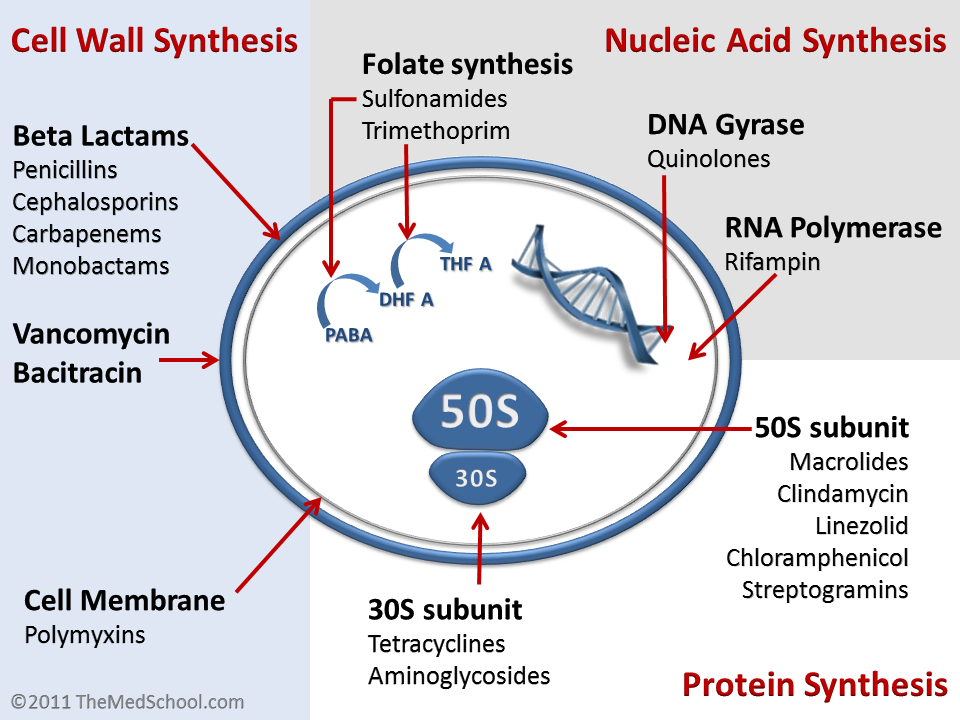Page Contents
OVERVIEW
This page is structured to serve as a practical guide to help explain the theory behind how others have chosen to teach antibiotics with the ultimate goal of offering a more practical alternative for students.

HOW HAVE OTHERS APPROACHED IT IN THE PAST?
Granted that Stepwards is not the only group trying to teach antibiotics to others there are many different approaches to try and address this topic. Lets take a look at some of the approaches that some have tried in the past, so we can see where there is room for improvement.
Learning medications by DRUG CLASS/MECHANISM: microbiologists are a big fan of this approach, and in many ways it makes a lot of sense. The mechanism of certain drugs will dictate their activity and which types of microbes they can cover. What this approach doesn’t allow for is appreciating that sometimes the mechanism is not clear/does not always perfectly explain the efficacy of medications.

Learning medications by MICROBE: some believe that learning the microbes is really the trick to learning the antibiotics, simply because the whole point of the medications is to treat specific bugs! There is a lot of value in this approach as well, because fundamentally it is true that the treatment should be tailored to the specific infection at hand. The challenge with only using this approach is that often in a clinical scenario the actual casual pathogen is unclear, and treatment often must be broad spectrum.

Learning medications by RANDOM MEMORIZATION/PATTERN RECOGNITION: this approach has become more popular with medical students as of late. The task seems so impossible, and there are so many standardized exams that test these random associations, that this approach has worked well for some. Their are now companies that will help facilitate that random pattern recognition based methodology of learning (such as by using elaborate cartoons). While its effectiveness in a test setting can be justified, it is important to appreciate that learning information in such a way renders it almost useless for real life clinical scenarios.

Other approaches (harder to classify): there are also other approaches that are taken that are a bit more difficult to classify. Take a look at this page dedicated to the concept of the Antibiotic Ladder.
HOW ABOUT THE PRACTICAL APPROACH?
There is no doubt that the above methods all have utility in their own way. Regardless, it seems as though there must be a better way in broaching the subject of antibiotics that incorporates the advantages of the above methods, while addressing their individual shortcomings.
The approach here will be to simply mimic the clinical scenarios that physicians are presented with in an effort to teach antibiotic medications in a “real life” approach. Why learn something in a way that is not applied? Lets see how this plays out!

ORGANIZING ANTIBIOTICS BY THE CLINICAL SCENARIO
The page dedicated to covering antibiotics by different clinical scenarios can be found here!
Page Updated: 09.10.2016